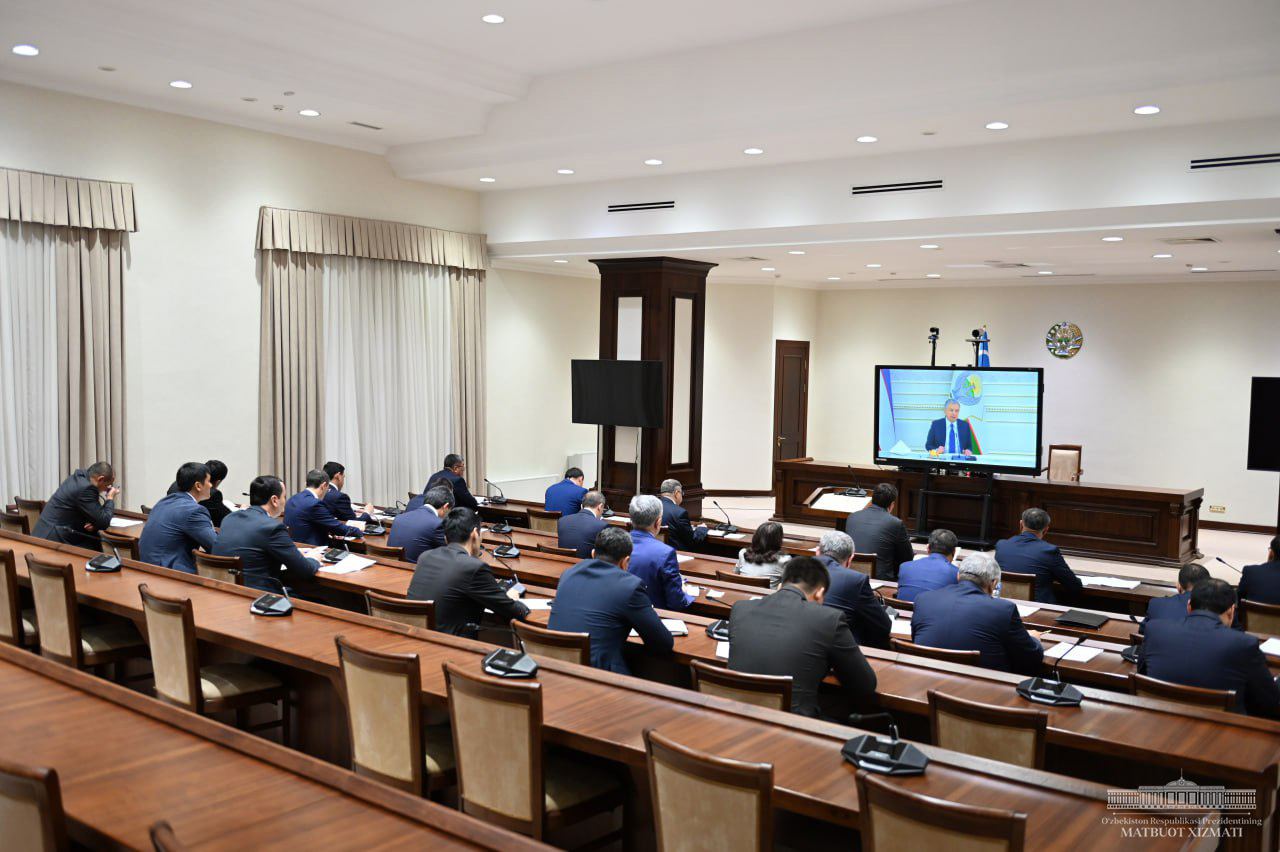On November 21, President Shavkat Mirziyoyev chaired a videoconferencing on the rational use of land resources, land accounting and improving the quality of cadastral services.
Economic growth, food security, job creation and regional investment inflows depend significantly on land resources. Over the past three years, 40 million hectares or 90% of the country’s land has been digitized.
However, the market value of 44.8 million hectares of land and 8.3 million buildings and structures remains unassessed. Currently, the conditional cadastral value of existing buildings and structures is estimated at $70 billion. Their true market value could be at least 4-5 times higher. Given the market value of the land they occupy, these assets represent significant economic potential.
Large untapped land resources are being identified through aerial photography and the use of modern drones. For instance, in Karshi district, where 45,000 hectares are classified as arable land, it was revealed that 5,100 hectares classified as pasture are actually irrigated land. This represents lost revenue for the budget, employment opportunities and income.
In total, documents confirming the rights to 286,000 hectares of agricultural land are incomplete. The legal status of 460,000 hectares of land allocated for permanent use is unclear. The documented area of 159,000 hectares differs from the actual area.
As a result, more than 900,000 hectares of agricultural land are not included in the cadastre. Due to the lack of cadastral records, it is not possible to officially lease this land for secondary crops. As a result, at least 300,000 employment opportunities, secondary crop production and informal leasing arrangements remain unexploited.
In this context, it was decided to assess the efficiency of the use of such land. If dekhkans and farmers are using the land efficiently, lease agreements will be signed with them and the land will be registered in the cadastre. Inefficiently used land will be returned to the reserves of local administrations.
Relevant ministries have been instructed to put this system into practice and to carry out aerial photography next year to complete the cadastre of agricultural land.
During a visit to the Surkhandarya region last week, the head of state highlighted the opportunities for growing export-oriented vegetables. There are many interested people in the regions who are willing to get involved.
In this context, it has been decided to allocate at least 100 hectares of available land in each district for the cultivation of export-oriented vegetables. Farmers will be trained in ‘farmer schools’ and lectures on cultivation methods will be held. A guaranteed supply of seeds will be set up. Arable land will be auctioned, with the right to lease it to individuals with expertise and experience in export.
The issue of proper land accounting was discussed at the meeting.
Currently, 817,000 hectares of land have been converted into residential and industrial zones, but their category is still reported as agricultural land. The Cadastre Agency and local administrations have been tasked with eliminating these uncertainties and accurately reflecting the actual land balance in the reports.
There is also a large amount of unregistered land in the water management sector. The key to deriving additional economic benefits from them is to fully include them in the cadastre. In other words, this will serve as an additional reserve for both employment and food production.
The task is to formalize the land along canals and collectors, near natural lakes and rivers, and to transfer it to the population for the cultivation of export-oriented crops.
There is no documentation on individual internal roads and adjacent land in the road sector. In Karakalpakstan and Khorezm, for instance, more than 2.7 thousand vacant plots of land have been identified, which can be auctioned after internal roads are registered. It is therefore planned to prepare their cadastre next year, together with the repair of internal roads, as part of the ‘Initiative Budget’ and ‘My Road’ projects.
The issue of efficient land use was analyzed in detail at the meeting.
Over the past five years, 42.5 thousand hectares have been withdrawn from agriculture and transferred to the category of residential and industrial land. However, the khokims of some provinces, districts and cities are unable to use them effectively. In particular, 17.5 thousand hectares of land in 100 districts whose category was changed have neither been transferred to entrepreneurs nor put up for auction. There are also vacant plots in industrial zones, leading to significant revenue losses for the budget.
Governors have been warned of the need to accelerate work in this direction.
The training of cadastral staff and the improvement of their qualifications was highlighted as an important task. At present, the quality of professional training is not at the required level. Some faculties and departments are not adequately designed and educational programmes are outdated.
Therefore, the establishment of modern laboratories, the supply of universities with new educational literature and the involvement of qualified specialists from abroad are deemed necessary.
The issue of executive discipline in ministries, local administrations and agencies was also discussed.
– We are undertaking large-scale reforms to build a new Uzbekistan. No area is being overlooked. But the reforms must not remain on paper. The heads of ministries and industries, the khokims, are obliged to ensure their unconditional implementation,” the President said.
It was noted that some leaders, in their pursuit of numbers, forget about quality, efficiency and requirements. Strict instructions were given to ensure executive discipline and to meet deadlines for all programmes, roadmaps and projects.
The responsible officials were briefed on the issues discussed at the meeting.
